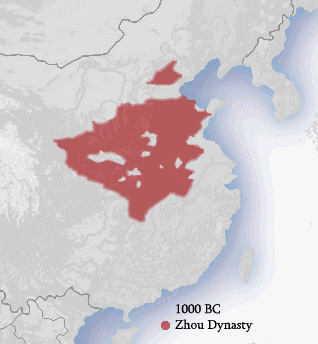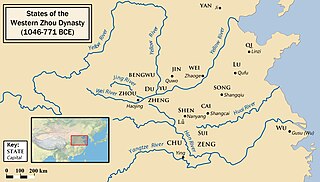This article needs additional citations for verification .(February 2024) |
The 1030s BC is a decade which lasted from 1039 BC to 1030 BC.
Contents
| Millennium |
|---|
| 2nd millennium BC |
| Centuries |
| Decades |
| Years |
|
| Categories |
This article needs additional citations for verification .(February 2024) |
The 1030s BC is a decade which lasted from 1039 BC to 1030 BC.
| Millennium |
|---|
| 2nd millennium BC |
| Centuries |
| Decades |
| Years |
|
| Categories |
The 11th century BC comprises all years from 1100 BC to 1001 BC. Although many human societies were literate in this period, some of the individuals mentioned below may be apocryphal rather than historically accurate.

The 7th century BC began the first day of 700 BC and ended the last day of 601 BC.
The 8th century BC started the first day of 800 BC and ended the last day of 701 BC. The 8th century BC was a period of great change for several historically significant civilizations. In Egypt, the 23rd and 24th dynasties lead to rule from Kingdom of Kush in the 25th Dynasty. The Neo-Assyrian Empire reaches the peak of its power, conquering the Kingdom of Israel as well as nearby countries.
The 9th century BC started the first day of 900 BC and ended the last day of 801 BC. It was a period of great change for several civilizations. In Africa, Carthage is founded by the Phoenicians. In Egypt, a severe flood covers the floor of Luxor temple, and years later, a civil war starts.
The 10th century BC comprises the years from 1000 BC to 901 BC. This period followed the Late Bronze Age collapse in the Near East, and the century saw the Early Iron Age take hold there. The Greek Dark Ages which had come about in 1200 BC continued. The Neo-Assyrian Empire is established towards the end of the 10th century BC. In the Iron Age in India, the Vedic period is ongoing. In China, the Zhou dynasty is in power. Bronze Age Europe continued with Urnfield culture. Japan was inhabited by an evolving hunter-gatherer society during the Jōmon period.

The Zhou dynasty was a royal dynasty of China that followed the Shang dynasty. Having lasted 789 years, the Zhou dynasty was the longest dynastic regime in Chinese history. The military control of ancient China by the royal house, surnamed Ji, lasted from 1046 until 771 BC for a period known as the Western Zhou, and the political sphere of influence it created continued well into the Eastern Zhou period for another 500 years. The establishment date of 1046 BC is supported by the Xia–Shang–Zhou Chronology Project and David Pankenier, but David Nivison and Edward L. Shaughnessy date the establishment to 1045 BC.

The Shang dynasty, also known as the Yin dynasty, was a Chinese royal dynasty that ruled in the Yellow River valley during the second millennium BC, traditionally succeeding the Xia dynasty and followed by the Western Zhou dynasty. The classic account of the Shang comes from texts such as the Book of Documents, Bamboo Annals and Records of the Grand Historian. Modern scholarship dates the dynasty between the 16th to 11th centuries BC, with more agreement surrounding the end date than beginning date.
The 1070s BC is a decade which lasted from 1079 BC to 1070 BC.
The 1020s BC is a decade which lasted from 1029 BC to 1020 BC.
This is a list of historical capitals of China.

The Western Zhou was a period of Chinese history, approximately first half of the Zhou dynasty, before the period of the Eastern Zhou. It began when King Wu of Zhou overthrew the Shang dynasty at the Battle of Muye and ended when Quanrong pastoralists sacked its capital Haojing and killed King You of Zhou in 771 BC.

King Zhao of Zhou was the fourth king of the Zhou dynasty. He ruled from 977/75 BC until his death twenty years later. Famous for his disastrous war against the Chu confederation, his death in battle ended the Western Zhou's early expansion and marked the beginning of his dynasty's decline.
King Nan of Zhou, less commonly known as King Yin of Zhou, was the 37th and last king of the Chinese Zhou dynasty, the son of King Shenjing of Zhou and grandson of King Xian of Zhou. He was king from 314 BC until his death in 256 BC, a reign of fifty-nine years, the longest in the Zhou Dynasty and all of pre-imperial China. By the time of King Nan's reign, the kings of Zhou had lost almost all political and military power, as even their remaining crown land was split into two states or factions, led by rival feudal lords: West Zhou, where the capital Wangcheng was located, and East Zhou, centred at Chengzhou and Kung. Therefore, Nan lacked any personal territory and was effectively under the control of the local feudal lords, essentially relying on their charity.

Dan, Duke Wen of Zhou, commonly known as the Duke of Zhou, was a member of the royal family of the early Zhou dynasty who played a major role in consolidating the kingdom established by his elder brother King Wu. He was renowned for acting as a capable and loyal regent for his young nephew King Cheng, and for successfully suppressing the Rebellion of the Three Guards and establishing firm rule of the Zhou dynasty over eastern China. He is also a Chinese culture hero credited with writing the I Ching and the Book of Poetry, and establishing the Rites of Zhou.

The Battle of Muye, Mu, or Muh took place in ancient China between the rebel Zhou state and the reigning Shang dynasty. The Zhou army, led by Wu of Zhou, defeated the defending army of king Di Xin of Shang at Muye and captured the Shang capital Yin, ending the Shang dynasty. The Zhou victory led to the establishment of the Zhou dynasty, and is used in Chinese historiography as a justified example of the doctrine of the Mandate of Heaven.

The State of Xu was an independent Huaiyi state of the Chinese Bronze Age that was ruled by the Ying family (嬴) and controlled much of the Huai River valley for at least two centuries. It was centered in northern Jiangsu and Anhui.

Dai was a state which existed in northern Hebei during the Spring and Autumn Period of Chinese history. Its eponymous capital was located north of the Zhou Kingdom in what is now Yu County. It was apparently established by the people known to the ancient Chinese as the Baidi or "White Barbarians". They traded livestock and other goods between Central Asia and the Zhou states prior to their conquest by the Zhao clan of Jin.

The Rebellion of the Three Guards, or less commonly the Wu Geng Rebellion, was a civil war, instigated by an alliance of discontent Zhou princes, Shang loyalists, vassal states and other non-Zhou peoples against the Western Zhou government under the Duke of Zhou's regency in late 11th century BC.

Ying was a minor kingdom in eastern China that existed from circa 1030 BCE to 646 BCE. Sometime after its establishment it became a vassal state of the Western Zhou, which extended into the Spring and Autumn period. Ying briefly became a vassal state of Chu in the early-600s BCE, but was annexed by the Chu in 646 BCE. Ying was in modern-day Pingdingshan, Henan province, where many artifacts from the state have been unearthed.